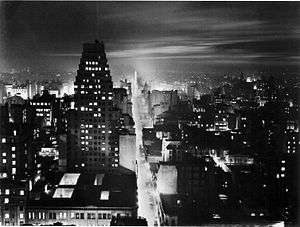Horacio Coppola


Horacio Coppola (31 July 1906 – 18 June 2012)[1] was an Argentine photographer and filmmaker,[2] and the husband of the German photographer Grete Stern.
Biography
Coppola was born in Buenos Aires, the youngest of 10 children. His parents, Italian immigrants, were well off, and he studied art, music, law and languages. He was about 20 when he began taking photographs.
He traveled to Europe in the 1920s and ’30s. Photography was coming into its own as an art form, with pictures being shot from odd angles and cropped for effect.
He met his future wife in Germany. Later, in London, he took portraits of famous artists, and worked on a book about Mesopotamian artifacts in the Louvre and the British Museum. He and his wife went back to Argentina in 1936. That year, he was commissioned to photograph Buenos Aires for its 400th anniversary, and produced streetscapes that captured the romance, vitality and squalor of a great city.
He and Ms. Stern had a daughter, Silvia, and a son, Andres. They later divorced. In 1959, Coppola married Raquel Palomeque, a pianist.
Coppola was the author of the photographs that appeared in the first edition of "Evaristo Carriego" (biography) (1930)[3] by Jorge Luis Borges. He was one of the pioneers photographers from Argentina and key figure in the Modernism. He studied in the Bauhaus during the thirties and came back to Argentina with his German wife. He remarried later to Raquel Palomeque.
He was named "Illustrious Citizen of Buenos Aires" and at 100 had a retrospective exhibit at the Malba Museum in Buenos Aires.[4]
References
- ↑ A los 105 años, murió el fotógrafo argentino Horacio Coppola (Spanish)
- ↑ Molina, Maria Julieta (30 July 2011). "Coppola, los ojos que vieron un siglo". La Nación (in Spanish). Retrieved 19 December 2011.
- ↑ "Great world writers: Twentieth century" by Patrick M. O'Neil". Retrieved 22 May 2012.
- ↑ Malba.org.ar
External links
- Horacio Coppola at the Internet Movie Database
- Fotografo: Horacio Coppola (Spanish)
| Wikimedia Commons has media related to Horacio Coppola. |
- "Horacio Coppola, Evocative Argentine Photographer, Dies at 105," Obituary, New York Times, July 2, 2012
- Obituary Buenos Aires Herald
- Horacio Coppola
- Indexarte
- El País